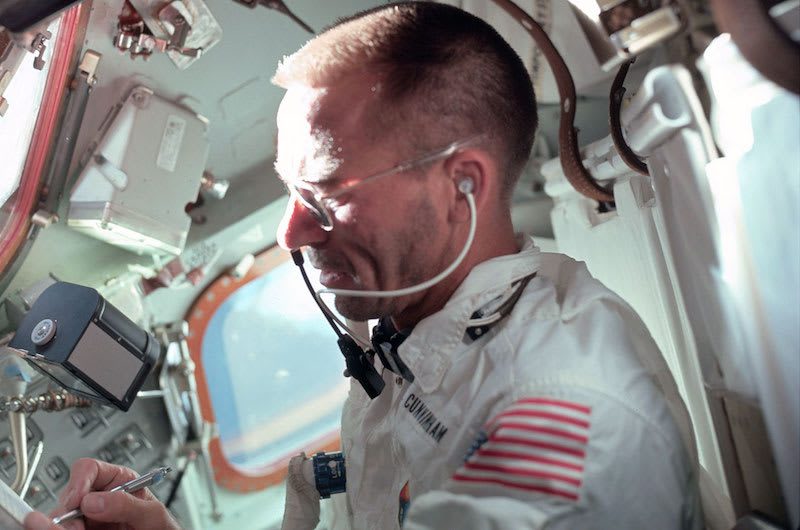The Dangers of Over-engineering
Follow articleHow do you feel about this article? Help us to provide better content for you.
Thank you! Your feedback has been received.
There was a problem submitting your feedback, please try again later.
What do you think of this article?
There is a machine that was designed nearly 90 years ago that is still in everyday use. It can be found around the world, providing reliable service in harsh conditions and generally being too useful to replace. That machine is the Douglas DC-3.
The DC-3 - Still in service after nearly 9 decades!
Image: Andras Kisgergely / Airliners.net
The DC-3 first flew in 1935 and was the first modern airliner. At the time, its sleek lines and remarkable performance made it the first modern airliner. During the 1940s, the military version of the DC-3 was made in the thousands, delivering cargo and saving lives in every part of the world. Since the dawn of the jet age, the DC-3 has long been replaced in passenger service. And yet, there are still well over 100 examples in regular commercial use.
There are several reasons that the DC-3 remains relevant 8 decades after it was first introduced. Its performance is still useful, and few other aeroplanes can do what it does. Able to fly from small, rough airstrips in the remotest parts of the world, it can be maintained easily without the need for advanced tools or complex electronics.
Too Useful to Replace
Almost all other aircraft of the same era have long since been retired. Some were superseded by newer technology, while others were not strong enough to withstand constant use. In contrast, the DC-3 was designed and manufactured to such a robust standard that they can withstand decades of abuse.
If a machine serves far beyond its intended lifespan, it could be argued that it is over-engineered. An over-engineered machine can be identified by its qualities. It may provide performance far greater than that needed for its intended purpose, or it might be built to last far longer than originally planned. The DC-3, with its remarkable duration of service, could be described as over-engineered. There is perhaps another, better example to be found in the aerospace industry.
Saturn V - Over-engineered by design
When the United States first committed to the space program, it was able to call on assistance from an unusual source. Led by the remarkable Wernher Von Braun, a team of German exiles became part of NASA. These engineers created the remarkable machines that were needed to carry the first astronauts into orbit, and they did so in a traditional way. Their rockets were exquisitely designed with huge safety margins and reserves of performance. As the race into space gathered momentum, this conservative approach to design saved the program more than once. The extra performance that was built into the Germans’ designs allowed payloads to be increased and weights reduced. In space flight, weight is always the enemy.
Price or Performance?
However, there was a price to be paid to provide this kind of performance. Reliability and performance both add cost to any design. In a hypothetical example, a designer could create a product with 75% reliability, and the costs would be low enough to allow the creation of 1,000 examples. Improving reliability is possible, but the cost increase is not linear. To achieve a reliability of 99% might cost so much that only 10 examples can be built.
The designer needs to choose the path between reasonable costs and acceptable risks. To make the right decision on which approach to take, it is important to understand the consequences of failure. For the space program, the safety of the astronauts was of paramount concern, so ensuring the best possible performance was vital. However, for many modern commercial applications, is this same level of reliability required?
There are some applications in which safety is important. In an upcoming interview, I spoke to Brian Engle of Amphenol and discussed the safety of the latest lithium-ion (Li-ion) battery systems. Their energy capacity and recharging characteristics mean that they are in widespread use across a huge range of industries. However, there are safety concerns. If a Li-ion battery is damaged, the result can be a dangerously spectacular event called thermal runaway. Battery management systems (BMS) need to be designed to minimise these risks.
Not all failures end in such a dramatic result. At the opposite end of the scale to the safety of a space vehicle, most users would expect a cheap ball-point pen to be a disposable device. The consequences of its failure are small, so it is impractical to spend more on its development.
The Space Pen
There is an apocryphal tale about NASA spending millions on a ball-point pen that could write in zero gravity (famously, in the story, the Soviets simply used pencils). This is not quite true. In reality, the Fisher Pen Company created a pressurised version of the conventional ball-point that would work in zero gravity, in extreme temperatures or even underwater. Both the USA and the Soviet Union bought the Fischer pen for use in their own space programs.
Pens...In...Spaaaaaace!!
Astronaut Walt Cunningham uses the Fisher Space Pen aboard Apollo 7, 1968
This is the perfect example of a product that could be described as vastly over-engineered. You can still buy one if you would like – they currently retail for around $100 – but most of us simply do not need this extreme performance.
The same dilemma faces the designer when the time comes to choose a connector. The connector market is one of the most diverse in the entire electronics industry, and this complexity can be somewhat daunting. The designer needs clear on the conditions that their product will encounter and the level of reliability they need, especially if superior performance is required.
There are plenty of options at the lower end of the price range that will provide perfectly adequate service in simple commercial applications. However, as soon as the connector needs to provide a superior level of performance, the selection process becomes harder. For many of us, high reliability is a euphemism for military and aerospace products. Indeed, there may be a perception that products approved to a MIL-Spec or BS number are naturally superior to other products that are not.
When we start looking at this type of product, there is no practical upper limit to the costs of a connector. If an engineer tries to design for the very worst-case scenario, it is perfectly possible to fall into the “just in case” mentality and choose a connector that costs many times more than necessary. The key to avoiding this pitfall when it comes to connectors is to rely on the data. What is the connector intended to do? What are its electrical requirements, how long should it last and what environment does it need to withstand?
Armed with this handful of vital information, it should be possible to choose the appropriate connector to satisfy your requirements. As with many things in life, it should be possible to select the right solution for you without spending more than you need.
Unless you really, really want to.




